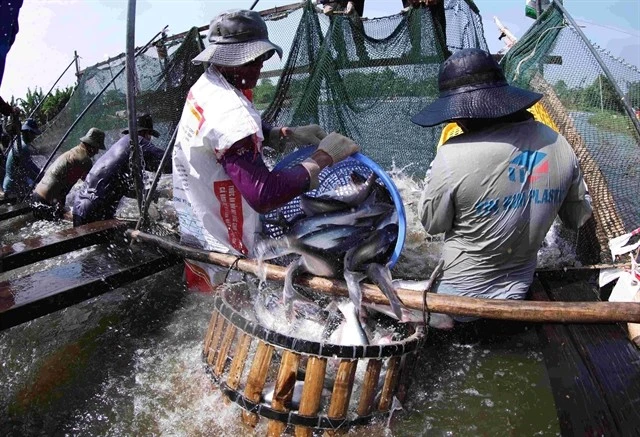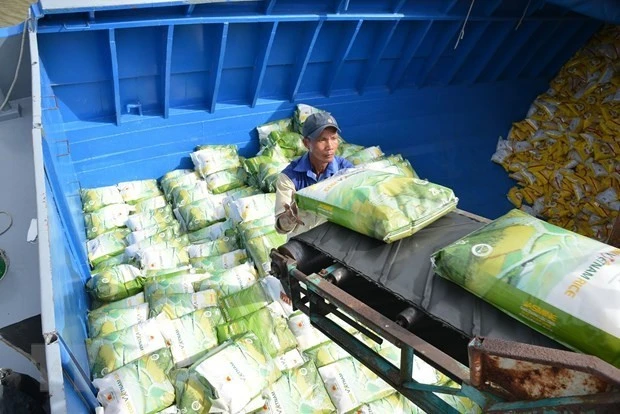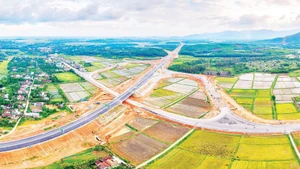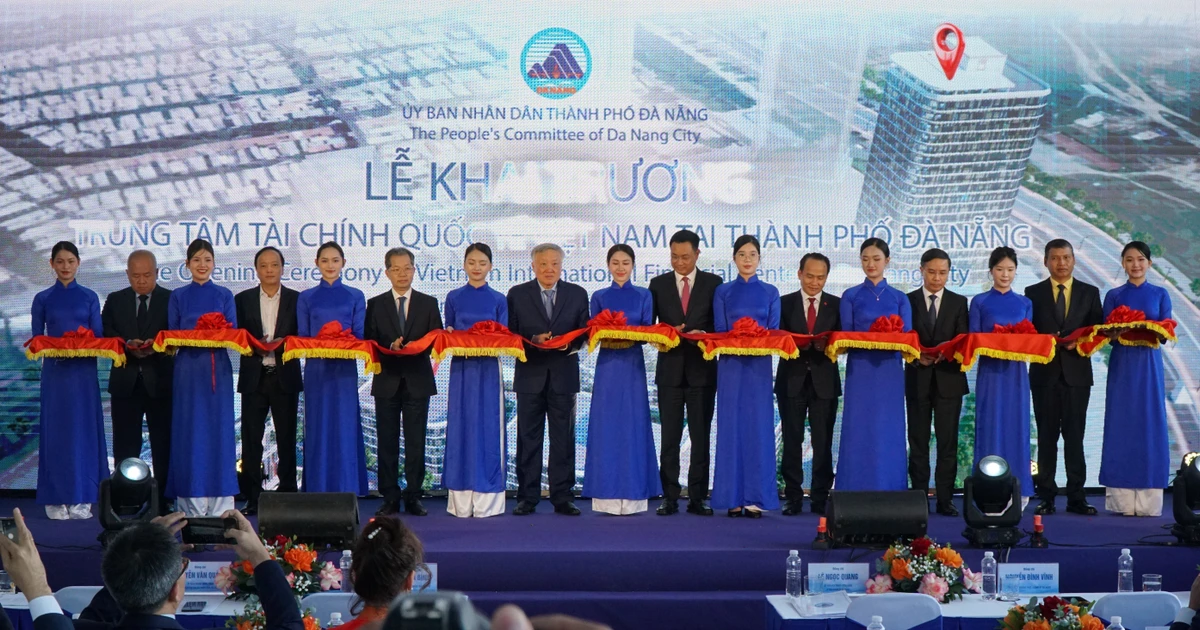According to the General Department of Customs, Vietnam exported 359,310 tonnes of rice in January 2023, with a total turnover of 186.6 million USD and an average price of 519.3 USD per tonne, down 17.3% in volume and 15.3% in turnover, but the price increased slightly by 2.5%, compared to December 2022.
The Philippines still ranked first in Vietnam’s rice consumption, with 129.32 million tonnes worth 64.55 million USD and at an average price of 499.2 USD per tonne (up 4.7% compared to December 2022).
It is followed by the Indonesian market, with 85,925 tonnes, equivalent to 40.93 million USD and an average price of 476.4 USD per tonne. The Chinese market ranked third, with a total imported volume of 47,424 tonnes, equivalent to 28.39 million USD and an average price of 598.6 USD per tonne (up 8% compared to December 2022). Although rice export output in January 2023 fell, the prices of rice in all markets recorded increases compared to December 2022 and compared to the same period in 2022. Therefore, rice prices in the domestic market are also pushed up, increasing profits for rice growers.
It is forecast that the price of Vietnamese rice will continue to remain at a high level as the world food demand tends to advance. Thus, it is necessary to continue to improve the quality of exported rice, to maintain the traditional market and expand to new markets, amid the increasing rice quality requirements of importing countries.
According to the Department of Crop Production (Ministry of Agriculture and Rural Development), farmers in the Mekong Delta have promoted the application of science and technology to production, so both the output and quality of rice are improved. Although the rice production area in the Mekong Delta has been reduced to 3.8-3.9 million ha, the value has increased. The reason is that more high-quality and speciality rice varieties are grown, raising the percentage of high-quality rice to nearly 50%.
The Mekong Delta still maintains a total farming area of about 3.9 million ha, with an output of 24 million tonnes of rice. The region continues to apply science and technology in farming, with priority given to high-quality, short-term and fragrant rice varieties, which are suitable to the market’s requirements. This is also an important condition to increase the export price of Vietnamese rice.
The application of mechanisation in the field also needs attention to improve the quality of rice. Loc Troi Group Joint Stock Company has cooperated with several localities to implement the farming model of “Field without footprints”. This is a model of improving production processes to reduce the amount of seed by 30%, as well as the amount of fertiliser and medicine by 20%, through synchronous mechanisation.
Under the model, farmers will be trained in the whole process to help reduce the number of pesticides used in the field but still ensure productivity and improve the quality of agricultural products, helping promote consumption and create a stable source of income for farmers.
Regarding the improvement in rice quality, General Director of Green Stars Investment Joint Stock Company Nguyen Anh Tuan said, that his company specialises in the production of organic fertilisers and biological products, as well as building processes for each group of the plant. The company has cooperated with agricultural management agencies in some localities to deploy safe rice production areas without residues of pesticides. As a result, in different provinces and different farming seasons, the average farmer’s investment cost decreased by 10-15% and the average profit rose by 8-10%.
These directions are also the general trend, in line with the goals set out in the Project on restructuring the rice industry in Vietnam, until 2025 and 2030. The country aims to have 80% of the planted area using high-quality seed, reduce the amount of seed sown to about 80 kg per ha, and apply advanced farming processes and good production practices to 70% of areas such as VietGAP standards, smart rice farming adapting to climate change, organic agriculture and others. The rice sector also expects to apply high technology and digital technology to about 20% of rice areas and cut down the number of chemical fertilisers and chemical pesticides used in rice production by 40%.
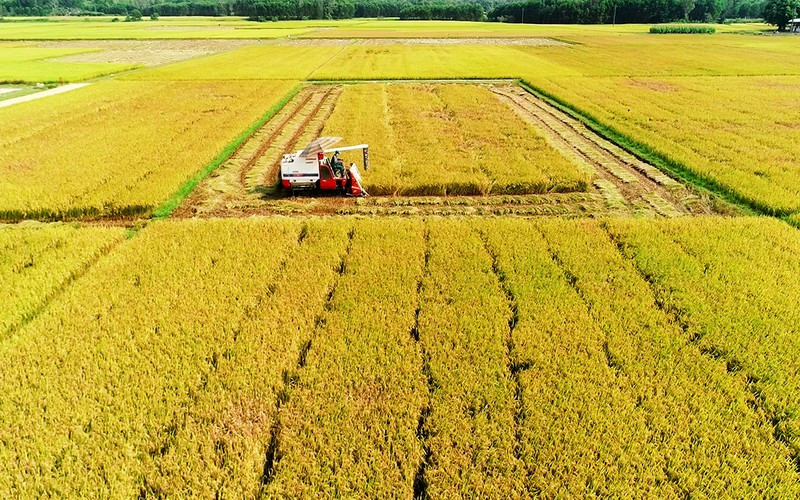
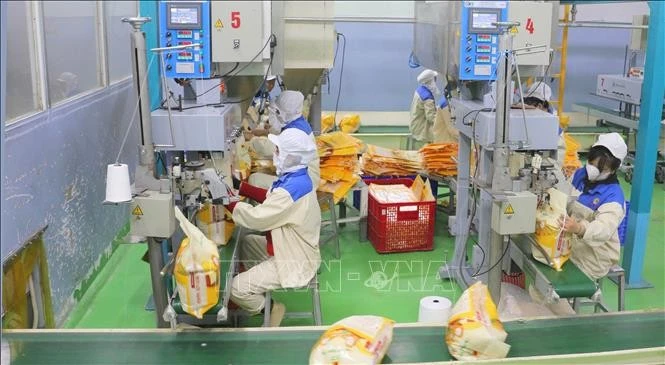

![[Video] Seven inspection teams formed to stabilise market during peak Tet period](https://en-cdn.nhandan.vn/images/9f233ae74386156ace55673ec5a8ea373e7bb5df2274800bfd51bda6ec86d9464d289201deda54c246314a974e2f0aef0bc69929884e4c53fd4eb6a1f98b468f6ae70becd9f49b834a8b9195e077c25b/anhminhhoavideo-110126-2.jpg.webp)

